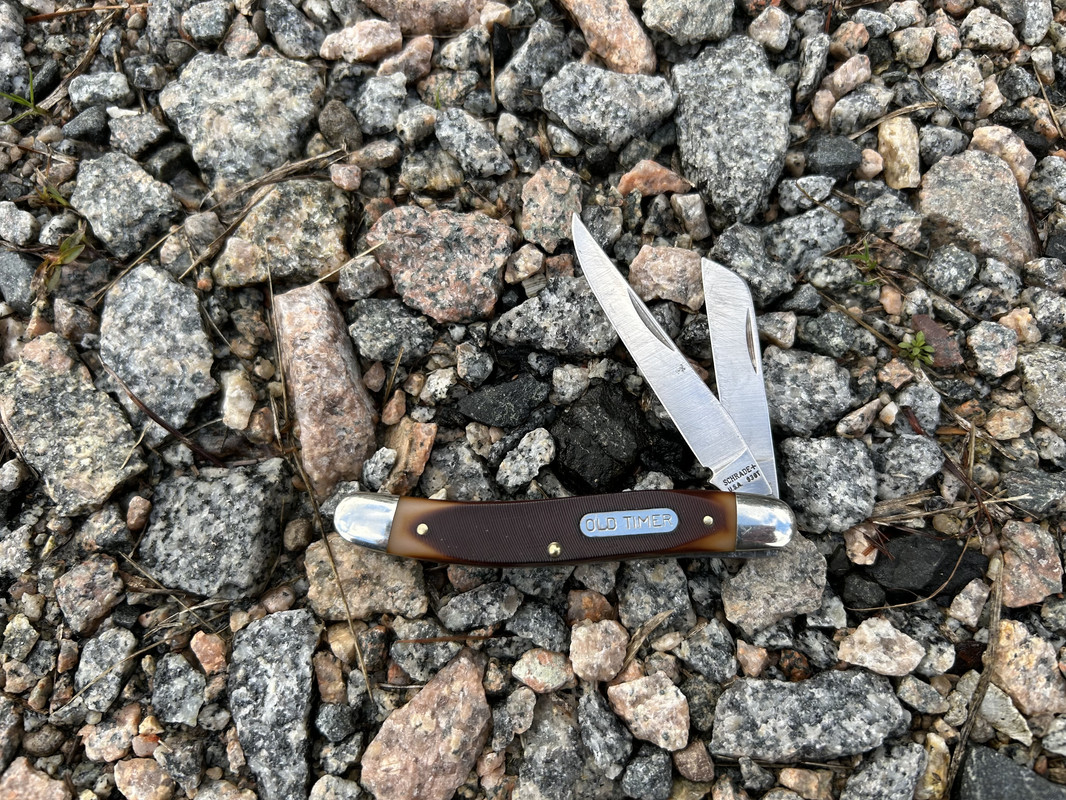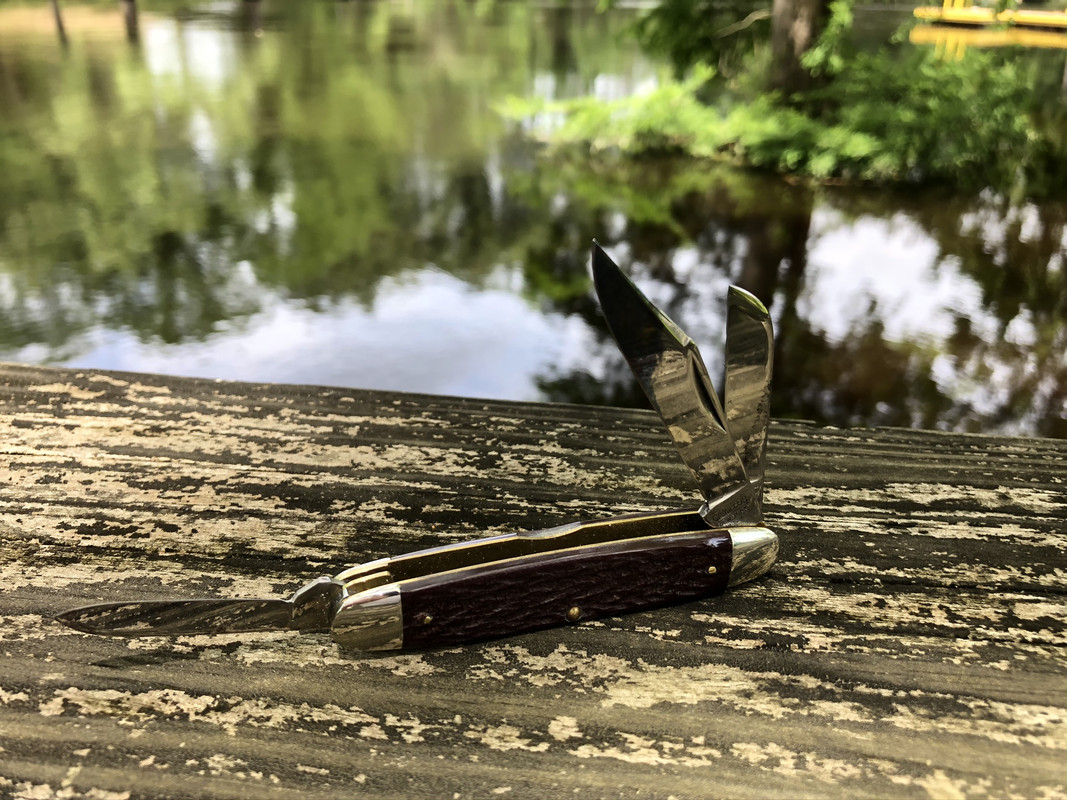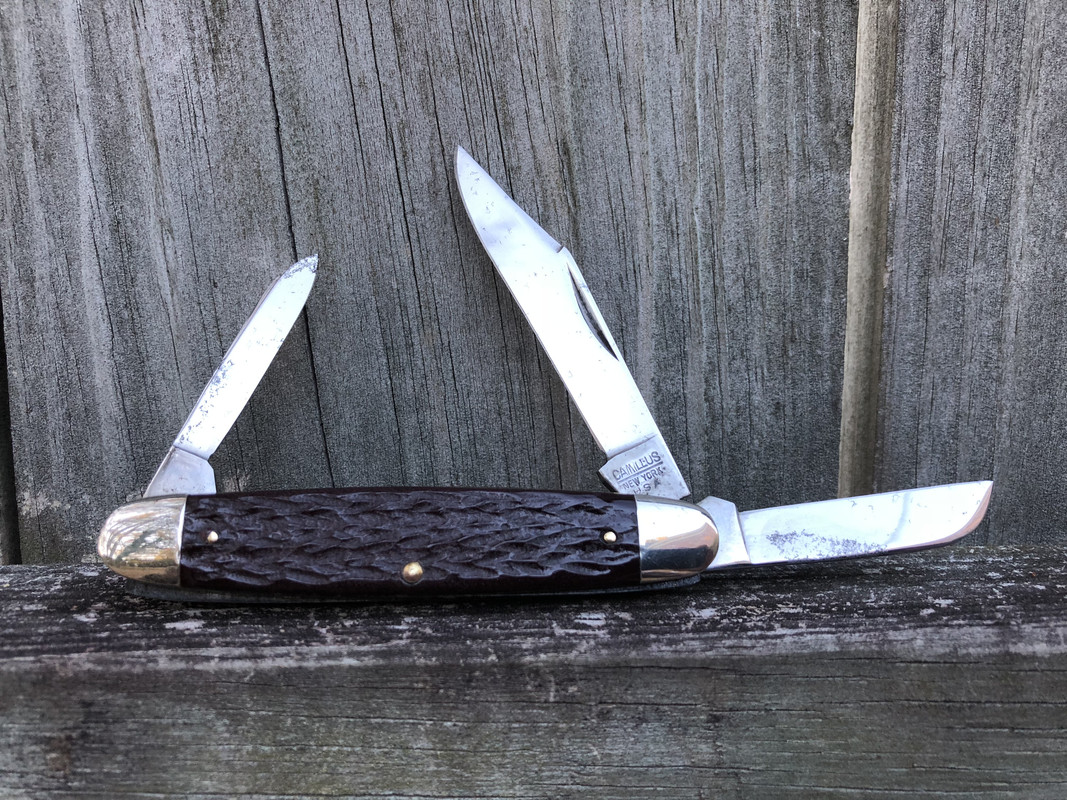tongueriver
Gold Member
- Joined
- Dec 28, 2007
- Messages
- 5,258
For anyone who doesn't know, Charlie and Duncan are mighty fine guys.
The BladeForums.com 2024 Traditional Knife is ready to order! See this thread for details:
https://www.bladeforums.com/threads/bladeforums-2024-traditional-knife.2003187/
Price is $300 $250 ea (shipped within CONUS). If you live outside the US, I will contact you after your order for extra shipping charges.
Order here: https://www.bladeforums.com/help/2024-traditional/ - Order as many as you like, we have plenty.
Charlie, you are indeed kind Sir!I like to think I am a LITTLE kinder than what you describe, Duncan!!



I love the swedge on that clip!! And a pen blade to boot!In my pocket, a Junior Cattle Knife by Camillus (#75) for today's carry.

HOLY...!! Now THIS is what secondary blades should look like on a cattle knife / stockman. I need to start looking for one of theseThis husky brute cattle knife was built on the world-famous (well famous with me anyway) 3 1/8 inch frame.
View attachment 2923192View attachment 2923193
I like the pen instead of the spey, Bruce.
Thank you gents! Like many of my knives, a lucky find.I love the swedge on that clip!! And a pen blade to boot!
Can you put a few more pics of the #75 its a cool knife and what is handle material,there are pictures of one at aapk that looks like worn plastic bus it is claimed to be bone.but always like the #75 size.nice findIn my pocket, a Junior Cattle Knife by Camillus (#75) for today's carry.



Now that is ssssssserpentine!An old favorite this afternoon




I love that shield!!!Wonderfully intact French Ivory (celluloid) Budding and Grafting knife!!View attachment 2917604View attachment 2917605View attachment 2917606Cool 3-D shield!!
Thanks for reposting this. Very informative.I was surfing my computer files and found this old post which I had copied at the time, from BladeForums, and I thought it might elicit some interest:
The following appeared in BladeForums>manufacturers forums>collectors>schrade:
Eric Albers, 25 March 2011: “Here's the thing about Schrade at that period (circa 1959-1960) in time: Schrade Waldens were initially going to be a line of bone handled knives, but they were having a hard time acquiring bone since they didn't have a license for it in Ellenville. They decided to contract out to Rogers, which I believe was in Rhode Island, or maybe Connecticut (can't recall at the moment) for the bone. Now the Schrade bone was dyed in a heated solution in large vats, basically "cooking" overnight. Rogers didn't have the right equipment, so Schrade shipped a few of their tanks over to them. Well it just so happens that one of those vats caught fire one night, and wound up burning the whole plant down! Without a source for bone now, and with a desire to find something to take its place, the experimenting began, which is why you find so many odd handles from that period. There are even a few masonite handled 8OT's floating around somewhere, which according to Dave Swinden actually worked quite well. The above knives (speaking of the early gold fleck handle material on Cal Pruett’s and Mathes’ 8 OT knives) are likely one of those experiments, as was the swirl mahogany plastic, etc. Some took a while to exhibit shrinkage, some worked OK, but it was the timely advent of delrin that sealed the deal.”
And this: DELRIN ONLY STARTED BEING USED IN THE SCHRADE WALDEN FACTORY AT THE END OF 1961.— JASON ROSINSKY, 22 MAY, 2025
I have a Camillus Barlow with what could be Bakelite. Or something else.Oldy two more pictures below. I narrowed the knife’s age down to 1955 - 1965. The handle material is a pre-Delrin synthetic (I have also seen it used on a Camillus Stockman of the same era). It is a brown material, similar to Case Rough Black and Imperial “shrinky-dink” aka gumfuddy. Unlike some of its contemporary synthetics, this one seems stable; hasn’t shrunk or turned up at the edges. Closest thing I can think of would be Bakelite, but not as hard. It really is a handy size pocketknife, very light in the pocket and quite capable. OH




Could be, although close up I'd almost think it was compressed wood or some other fiber. Could be the lack of jigging plus negligent storage.r8shell the handles on your Barlow appear to be the same material. Not sure about the pen knife.


Looking at the texture up close I would have to agree, looks like the same material.This carpenters whittler looks much like yours.
